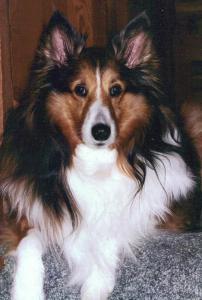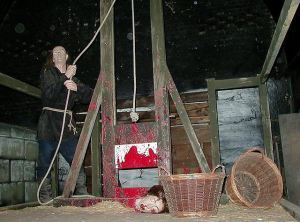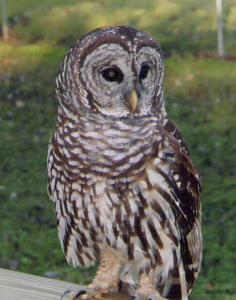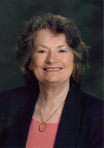Kathleen Mix's Blog, page 7
July 20, 2012
Seen a Bear Lately?
I wouldn’t dream of boarding an airplane without a book to read. For my recent trip to the Teton Mountains in Jackson Hole Wyoming and nearby Yellowstone Park, I took along a copy of Prey by Linda Howard. My choice proved not only entertaining but also eerily appropriate.
Howard’s books are always masterfully written, and Prey is no exception.
The story is set in the mountains of Montana. In addition to the dangerous locale and a cunning murderer, the author gives readers another memorable villain: a five-hundred pound black bear with a taste for human flesh. Howard ramps up the tension in her story by doing something rarely seen in women’s fiction: she gives the bear a point-of-view. Since I’ve never tried to think like a bear, I can’t say if her characterization is accurate. I can say it is unique and helps her book stand out from the crowd.
As usual, Howard’s human characters are well-rounded and the protagonists are people we’d like to know. She banishes sagging middle syndrome by expertly using the second-act chapters to develop the romantic relationship between the hero and heroine. I was so caught up in the personality conflicts and sexual tension that I hardly noticed the lull in the outdoor action.
Reading Prey on my flight to Yellowstone gave me extra respect for the wildness of the black bears and grizzlies known to frequent the park. By the time Howard’s fictional bear had made his first horrific kill, I’d decided to give any real ones I encountered an extremely wide berth, even if they looked tame.
If you read and liked High Country by Nevada Bar, be sure to read Prey by Linda Howard (Ballantine Books, 2012). If you haven’t read either, put both on your summer reading list. One warning: don’t open Prey in a tent while camping. You may pack up early and rush home.


July 7, 2012
Inspiration
 I just returned from Yellowstone National Park, where geysers shoot steam into the sky, caps of snow still cling to mountain peaks, and elk, bear, and bison roam. Standing at Inspiration Point and looking out over the Grand Canyon of the Yellowstone, I was awed by the beauty but lacked adequate words to describe it. Someday I may try to do justice to the magnificence of the park, but right now, I feel humbled and inept and I’ll leave the descriptions to poets.
I just returned from Yellowstone National Park, where geysers shoot steam into the sky, caps of snow still cling to mountain peaks, and elk, bear, and bison roam. Standing at Inspiration Point and looking out over the Grand Canyon of the Yellowstone, I was awed by the beauty but lacked adequate words to describe it. Someday I may try to do justice to the magnificence of the park, but right now, I feel humbled and inept and I’ll leave the descriptions to poets.
Even though I haven’t returned writing eloquent descriptions of Yellowstone, the trip was beneficial for me as an author. Travel always gives me new material and sparks new ideas. Airports are a wonderful place to observe people and find interesting characters.
On a previous trip, I watched a young Latino woman wearing a stylish, hot pink suit race through the terminal. I wondered why she was running. What had caused her to be late: an argument with her husband, a trip to the emergency room with a child, or a six-car pileup on the expressway? Was she hurrying to keep a business appointment or a rendezvous with a lover? That woman was the seed of an idea that germinated and grew into my fourth book, Beyond Paradise.
A couple years later, I bumped into an old friend during a long layover in Atlanta. We chatted about former co-workers, and one poignant story inspired the plot and characters of River of Fear. One of my future books may star a proud, but limping, soldier I saw last Saturday.
When I’m flying, I see cloud tops or rain from the window of a jumbo jet and ponder the weather’s power, fickleness, and potential cruelty. Looking below, the tiny houses make me wonder who’s inside: a lonely old woman, a happy family, a cat burglar? I see cars straining to climb winding mountain roads or bumping along dusty paths in the badlands and ask where the driver is going. Why is it important he get there? And what would happen to the people inside if their vehicle broke down in that seemingly desolate land?
Every writer nurtures their muse in their own unique way. Some jog or do yoga. Some cook or soak in a lilac scented bath. Some chop wood or swing a golf club. I watch people and observe life, and travel is my wellspring of inspiration.
If you’re a writer, what inspires you?








June 20, 2012
Worthwhile Risk
All my novels are seasoned with suspense. I write romantic suspense, and the characters in my stories fall in love during times of adventure and risk. They’re in danger while evading stalkers or staying one step ahead of a murderer.
But today, I want to talk about a different kind of suspense. Whether the book is a thriller like The Da Vinci Code or the first of a vampire saga like Twilight, the riskiest ingredient in any romantic plot or subplot is the characters’ developing relationship.
Novels are built around conflict, and relationships are overloaded with conflict and risk. The suspense sparked when two potential lovers meet comes from the questions: is this person ‘the one’, will our romance last, will I find happiness, or will I be hurt? Relationships are complex and difficult, and choosing a person to love and marry is a major decision involving a monstrous emotional risk. Because of the risk, falling in love is thrilling but dangerous, and the characters involved are usually seeped in conflict.
When a woman first sees a man, she may experience a rush of adrenaline. The otherwise-strong man may feel confused whenever a particular woman is near. Deep inside, they’re drawn to the other person, they want to love and be loved. But their subconscious warns of danger and screams for caution. One or both resist because of a perceived risk.
We all want to protect ourselves from hurt. We all have inner fears. What if the other person rejects me or hurts me? What if I make a fool of myself? Will this person accept me as I am or try to change me? If I admit my deep secrets, will this person use them against me?
We want to be one with the other person, but still retain our individuality. We worry they will try to control us or expect us to give up part of ourselves. Will their love be conditional? What will they demand in exchange? Being the first to say ‘I love you’ gives power to the other. Men may worry that needing someone makes them appear weak.
For many people the questions loom large, and they find physical intimacy easier than emotional intimacy. Falling in love becomes an agonizing experience.
Courtship is a process of learning about the other person and looking for assurances they’re worth the risk of dropping our defenses and standing exposed to the potential for pain. Love happens when we can allow another to see our vulnerabilities, when the pain we’ll feel at losing someone is great enough that we’ll risk allowing them intimacy. The crisis in a book is often the moment of insight when the character is forced to choose between loneliness and courage. They realize they need the other person’s love and take the risk of leaping into the unknown.
Novels are often about relationships, and every relationship is risky. A good story lets us face adversity without being exposed to real danger, lets us live the adventure without taking the risk. So the next time you open a book with characters who fall in love in the main plot or a subplot, prepare to devour a delicious serving of suspense.








June 8, 2012
An Important Lesson
An interviewer recently asked me to share the most important lesson I’d learned in my path to publication. A timely question, since June is graduation month and thousands of high school and college graduates are suddenly free from textbooks and exams. They probably believe all their years of study are behind them. But if they stop learning, they will be making a large mistake.
The lesson I’ve learned in my path to publication is that in writing, as in life, no one should ever stop seeking more knowledge. When I started writing many years ago, I believed I’d eventually reach a point where I would master the art of the novel and be able to quit studying technique. I poured over how-to books and studied articles on characterization and dialogue and plot. I read stories describing the career paths of best-selling authors. I attended workshops and conferences and soaked in every morsel of advice.
Many years and six published books later, I’m still doing those same things.
Now I understand my writing will never be perfect. I strive for excellence, try to make each book the best it can possibly be. But I realize practice and education are career-long necessities. A technique I read about five years ago and failed to understand may suddenly make sense if I hear that same information next week. That new knowledge may allow me to improve my next manuscript.
The more I learn, the more I realize how much is left to learn and how important continuing education is to keeping my career moving forward.
Many things have changed as a result of my study. Now when I read a novel, I notice how other authors make me empathize with their characters or hook me on the first page. When I see a movie, I’m aware of the story structure and appreciate the art of a master screenwriter. When I watch a well-written program on TV, my mind is attuned to the foreshadowing and the body language of the actors.
Writers can find valuable lessons in textbooks and workshops but also in their everyday lives. The world around us is a cornucopia of insights waiting to be seen, lessons waiting to be heard, and examples waiting to be understood. To avoid stagnating as a writer or a person, we must be lifelong students. We need to keep looking, listening, and learning.








May 22, 2012
Dog Story
 My companion animal is an aging sheltie named Eve who I adopted several years ago. She was living at a rescue and recovering after years of mistreatment. At first, Eve was fearful of everyone and everything, but over time, most of her fears faded. Her only lingering trauma is a terror of fly swatters. These days, she’s relatively calm – for a high-strung sheltie – and only becomes agitated when the skies fill with lightning and thunder.
My companion animal is an aging sheltie named Eve who I adopted several years ago. She was living at a rescue and recovering after years of mistreatment. At first, Eve was fearful of everyone and everything, but over time, most of her fears faded. Her only lingering trauma is a terror of fly swatters. These days, she’s relatively calm – for a high-strung sheltie – and only becomes agitated when the skies fill with lightning and thunder.
A few months ago, I noticed Eve was showing signs of age. She walks slower, runs less frequently, and lately, has an issue with stairs. My front entryway has five steps to the porch. When Eve and I go for a walk and return, she hesitates at the bottom of the steps. After much coaching and encouragement, she’ll climb the steps and come inside. But bedtime is another story. My bedroom is on the second floor. She refuses to climb a full flight of stairs and will sit at the bottom and wait to be carried.
A thunderstorm rolled through central Virginia three nights ago. As usual, Eve pressed her body against the side of the bed, wanting me to protect her from the weather. I performed my duty, petting her and talking to her for several minutes before remembering I hadn’t unplugged my computer. Since my personal paranoia involves the loss of all my writings in a computer disaster like a lightning strike, I jumped out of bed and rushed downstairs to pull the plug.
Eve wasn’t letting me out of her sight, and she followed me down the stairs. But when I turned around and went back to bed, she stopped at the foot of the stairs, waiting for a ride. I poked my husband, “Go bring Eve back up.”
Before he had time to get to his feet, the sky was lit with a bright flash of lightning, and the house shook from a tremendous crash of thunder. Eve bounded up the stairs and plastered herself to my side.
Since my brain is hard-wired to connect everything to writing, Eve’s dash up the stairway sparked thoughts about motivation.
An average person in one of my stories can do extraordinary things, accomplish tasks they might have thought beyond their talents or physical capabilities, find the courage to be a hero.
Like Eve, all they need to be prodded into action is a sufficiently strong motivation.








May 14, 2012
Off With Her Head
 Research is a fun way for writers to find nuggets of odd information. While writing various books, I’ve searched for information about picking locks, hacking into top secret government software, and flying in the Bermuda Triangle. I’ve investigated the sex life of snails and checked to see what poisonous snakes live on Caribbean islands.
Research is a fun way for writers to find nuggets of odd information. While writing various books, I’ve searched for information about picking locks, hacking into top secret government software, and flying in the Bermuda Triangle. I’ve investigated the sex life of snails and checked to see what poisonous snakes live on Caribbean islands.
The information writers dig up on offbeat topics makes our books interesting, and accuracy lets readers know they can trust us to tell them the truth. Sometimes, a strange tidbit makes a book memorable.
The other day, I started re-reading The Memphisto Club by Tess Gerritsen. Ms. Gerritsen is one of my favorite authors. Her stories are always a thrilling ride, and I read them at least twice: once to race through the pages and find out what happens, and a second time to analyze her techniques.
Near the beginning of this particular book, two of Ms. Gerritsen’s characters discuss beheading by guillotine and debate whether the person who loses their head feels pain or is aware of what has just happened. Since one character is a coroner, we trust her opinions and tend to share her conclusions.
Ms. Gerritsen may have known how much brain function and conscious awareness a severed head would possess based on her medical training. Or maybe she asked a librarian, “Where can I find information about cutting off someone’s head?” Inquires of that nature raise an eyebrow or two. But isn’t seeing the look on a librarian’s face part of the fun?
As a reader, I love books in which I learn something new or can eavesdrop on a conversation about a subject I never would have otherwise considered. In high school our class read A Tale of Two Cities by Charles Dickens. I remember Madame Defarge knitting while heads rolled into a basket. But I don’t recall how the author described the victims or whether he questioned their awareness of death. So now I have another book to reread if I want to satisfy my curiosity. Maybe I’ll call it research. Knowledge about beheadings might come in handy someday.
I’ve already learned that, in France, where the practice continued until 1978, beheading was considered a more humane form of execution than hanging because it supposedly resulted in immediate death. France no longer has capital punishment. But I if they did, I’m sure modern scientists would have a good idea of the time required for awareness to cease and activists would dispute the ‘humane death’ theory.
My work-in-progress is set on a sailboat and two Caribbean islands. Boats and islands are topics I know well and can write about with minimal research. But the snake I have eyeing my heroine’s arm raised a question: Should she worry it might be poisonous or know it isn’t? So off I went.
The answer: Most Caribbean islands are free of poisonous snakes. But – and this is the good nugget – the extremely dangerous fer-de-lance has occasionally been spotted in Trinidad and St. Lucia.
My island is fictitious. My character is not an outdoorsy person. She might know that poisonous snakes are rare in the islands, but she also could have heard of the extremely dangerous fer-de-lance and not know if the snake in front of her is harmless or deadly.
Maybe I’ll have her react by chopping off its head. Hopefully, a snake won’t be watching his upper section drop and be tortured by the thoughts: I’m going to die! I’ve just been beheaded!








May 1, 2012
The Owl Who Came to Dinner
 When I lived on the St. Johns River in Florida, a barred owl came to visit at least one evening a week. He’d land on my porch railing and sit, quietly watching and waiting.
When I lived on the St. Johns River in Florida, a barred owl came to visit at least one evening a week. He’d land on my porch railing and sit, quietly watching and waiting.
My neighbors to the north knew him well. Their first meeting had been a day three years before when they were fishing off the end of their dock. They had caught a fish that died before they could take it off their hook, so they’d tossed it on the dock boards behind them, planning to cook it for their cat.
But suddenly there was a great flapping of wings. The owl had swooped down from a nearby cypress tree and was maneuvering to snatch the fish. After dropping between the handrails and grabbing it in his talons, he perched thirty feet above them and devoured his prize.
The owl quickly learned that stealing fish required less effort than stalking and chasing field mice. He also learned to look cute, so when the neighbors had no fish they would offer him a chunk of raw meat.
His habit of stopping at my house began shortly after I moved in. I fell victim to his charms and started buying him cheap cuts of beef – he was far from a gourmet! I cubed the beef and kept most of it in the freezer. But I always had one small chunk thawed and available to set out for my friend. Neither my neighbors nor I wanted to make him dependent or tame, so even if he returned for a second helping, his limit was one free appetizer. After that treat, he was forced to hunt for an entrée.
The owl and I remained friends the entire two years I lived in that house, with only one minor argument. I’d hung a hummingbird feeder beneath a cypress tree, and the tiny, iridescent birds would speed in, sip some nectar, then land in the tree to rest. My husband and I would often sit on our porch in the late afternoon, drinking something tall and cold and watching the birds come and go. One evening we discovered the sharp-eyed owl had been watching the hummingbirds too. He swooped in and captured one in mid-air. A few little feathers drifted to the ground as the owl sped off with his dinner.
The next time he landed on my porch, I gave him a piece of my mind. His innocent stare was interrupted by a few blinks of his huge, brown eyes. How could I stay angry? He was a bird of prey. To his mind, hummingbirds were prey. We made up shortly after, but I felt rather guilty leaving the bird feeder in the yard. Was I luring innocent birds to their death?
My husband and I sold that house after a tornado spawned by a hurricane ripped off most of the roof and, two weeks later, another storm completely destroyed the dock. I don’t miss the house, but I do miss the owl. I honored him with a supporting role in my recent book, River of Fear. My characters are usually fictional, but the owl in the story was written from pleasant memories.
BTW, my former neighbors report the owl still comes around, and that last summer a pint-sized duplicate came along on a few visits. It appears he might be a she and, smart bird that she is, she’s teaching this particular hunting tactic to another owl generation.








April 13, 2012
Spring Cleaning
Before I reach the end of a work-in-progress, I’m mentally outlining my next book. My brain slips easily into a new milieu, but the physical transition from one book to another is usually more difficult. I have to clear out all the baggage associated with writing my old story. So every time I declare a manuscript finished, I spring-clean my desk.
While I’m immersed in writing a book, my desk evolves into a disaster area. On my right, I have a pile that grows as a manuscript progresses. It starts with a print copy of my first draft outline. Soon I’ve added a collection of notes scribbled on whatever writing material I had on hand when an idea struck. I brainstorm throughout the day, record my thoughts, and accumulate pages torn off notepads or ripped from spiral notebooks. On the backs of grocery lists, restaurant receipts, and napkins, I jot down themes and conflicts or questions for my plot to answer. A possible market or promo idea might be noted on a post-it or circled in the margin of a workshop handout. A snippet of dialogue recalled from a dream at three a.m. can be transcribed on the back of a piece of junk mail while I’m fixing breakfast and later dropped on the pile. Pages my critique partners have commented on are clipped together and saved for future reference. The farther into a book I get, the higher and more disorganized the pile.
The rest of my desk surface is rarely seen. My reference books occupy a four-foot long strip of real estate. Nearby, I have one stack of workshop handouts and another with back issues of writing magazines. I like quotes and statements of positive reinforcement, so scraps of paper with a few words to remember are scattered around or pinned to my wall. I clip and save interesting tidbits I read in newspapers. Notes with ideas for new stories are paper-clipped together and dropped in a shoebox.
I love file folders and well-organized shelves and frequently vow to sort my paper collection and discard the worthless junk. But my good intentions rarely last longer than a week. My piles of books to-be-read are soon tottering, and my stack of notebooks leaning. The file folders I’ve stuffed are hopelessly out of order. The space next to my printer is once again heaped with sheets designated scrap. Paper clips, pens, staplers, and stamps are all somewhere. Usually I can find them. If I’m lucky, my backup CDs are labeled.
Writers write, and I’d much rather write than clean. But occasionally, I have to push aside the clutter on my desk to make room for my keyboard. The gap between manuscripts is my designated time to impose some semblance of order. Even then, most of my collection of books and paperwork isn’t discarded. I still have the outlines and notes for every book I’ve had published collecting dust and dog hairs in the corner of my closet. And to my husband’s dismay, I hoard the written word, be it fiction or non-fiction.
Some people require organization and an orderly workspace to be productive. Some of us ignore the chaos and concentrate on our plot and characters. Go with whatever method works for you. Clean your desk between books or every day. Just remember to focus on writing.








March 26, 2012
Authors’ Best Friends
Several of the books I’ve read in the last two months have animals as secondary characters. I’ve noticed that even authors who sometimes have difficulty creating well-rounded human characters can write wonderful pets. And authors who shine at characterization give us animals we’d like to take home and keep.
In Tangled Up in You, Rachel Gibson introduces readers to a stray kitten that adopts the cat-hating heroine. We have to love the kitten, not just because of the cute factor but also because it has spunk. The kitten has decided where she wants to live, and no mere human is going to tell her otherwise.
In Catch a Shadow by Patricia Potter, the heroine owns an African Grey parrot named Merlin. The bird has a fascinating backstory. He was rescued from living with drug dealers, so he can imitate the wail of a police siren and yell, “Cops coming…cops coming.” He also screeches, “Help!” Merlin fits beautifully into the author’s suspense plot. Above all else, he’s memorable and has a personality that compels readers to care.
Author Jennifer Crusie is a master of characterization. In Agnes and the Hit Man, co-authored with Bob Mayer, readers are treated to two crazy flamingoes and a lovable hound dog. The flamingoes honk frantically ‘as if a giant duck were being turned inside out’ as they race, wings-flapping, toward the river. The dog sleeps ‘draped over her (the heroine’s) feet like a moth-eaten brown overcoat’ and ‘hoovers’ up cupcakes from the floor ‘at the speed of light’. We picture these scenes, laugh at the animals’ antics, and hate to see these characters go when the story ends.
I theorize that authors can create such great secondary characters because they know and love similar animals. They can fondly recall the antics of a puppy or kitten and translate their feelings for the pet into wonderful words of description. Plus they can’t take shortcuts and tell us the animal’s thoughts and feelings, they must show the animals body language and actions to get across emotions and grab our hearts.
Maybe authors fail to write characters we can empathize with due to a lack of love for the character or lack of familiarity with a person who has their protagonist’s traits.
Whatever the reason, I’ve never met a fictional animal I didn’t like. I wish I could say the same for the many weak or unbelievable human characters I’ve run across in my reading.








February 23, 2012
The Best Story Advice
My reference shelf is overflowing with a wide assortment of books about writing. Some I’ve read once and barely given a second look. A few, like Robert McKee’s Story, I reach for again and again.
Story was written primarily for screenwriters, but every fiction writer can benefit from studying McKee’s advice. In particular, his definition of events and scenes help me plot.
He says: “A story event creates meaningful change in the situation of a character that is expressed and experienced in terms of a value and is achieved through conflict.” And a scene “is an action through conflict …that turns the value-charged condition of a character’s life on at least one value with a degree of perceptible significance.”
When I reread those words and examine my work, I often see flaws in my story progression clearer.
McKee also talks about the point in every scene where a gap should open between a character’s expectation and the events as they unfold. If I examine my work and don’t find a gap, I know I still have work to do on that scene.
His section on Controlling Ideas helps me focus the story rather than wander into unrelated territory.
Whether you are outlining a plot, working on a first draft, or revising a second or third, Story is a valuable reference. I highly reccommend every writer own a copy and keep it within arm’s reach on their desk.











